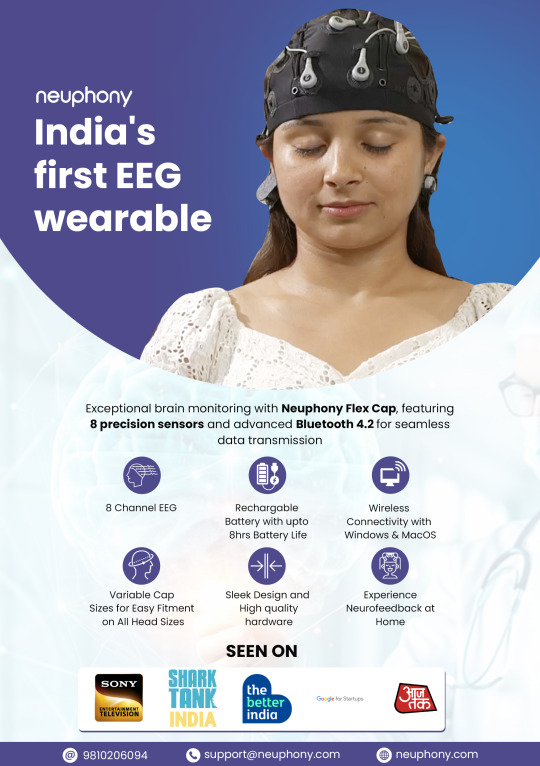#wearable computing
Explore tagged Tumblr posts
Text

Julie Watai
Wearable Computing
22 notes
·
View notes
Text

Stretchable transistors used in wearable devices enable in-sensor edge computing
Organic electrochemical transistors (OECTs) are neuromorphic transistors made of carbon-based materials that combine both electronic and ionic charge carriers. These transistors could be particularly effective solutions for amplifying and switching electronic signals in devices designed to be placed on the human skin, such as smart watches, trackers that monitor physiological signals and other wearable technologies. In contrast with conventional neuromorphic transistors, OECTs could operate reliably in wet or humid environments, which would be highly advantageous for both medical and wearable devices. Despite their potential, most existing OECTs are based on stiff materials, which can reduce the comfort of wearables and thus hinder their large-scale deployment.
Read more.
#Materials Science#Science#Transistors#Computing#Electrochemistry#Electronics#Organic materials#Flexible electronics#Wearable technology
16 notes
·
View notes
Text
recently got back into neopets after 10+ years and the neopets brainrot has firmly settled
#I swear I spend the entire day staring at my computer screen clicking all over the site and I don’t even notice the passage of time#mostly because now I can actually understand what to do on neopets lmaooo#as a kid I’d enter just to play the games and dream of getting some wearables and paintbrushes#(without actually having any idea on how to obtain said things)#I’m still dreaming about getting my hands on a paintbrush and finally fulfilling my childhood dream of a coloured xweetok#yes I’m a xweetok lover <3
5 notes
·
View notes
Text
Welcome to TrustedReviewSpot! Here, you will find honest and insightful reviews of the latest tech products. Whether you’re looking for smartphones, gadgets, or accessories, we’ve got you covered with in-depth analyses and comparisons to help you make informed purchasing decisions.
We believe that technology should enhance your life, and our mission is to guide you in choosing the best products available. Stay tuned for regular updates on the latest trends, product launches, and useful tips!
Feel free to share your thoughts and suggestions in the comments. We’d love to hear from you!

#tech#technology#gadgets#smartphone#iphone#android#apple#samsung#google#electronics#product reviews#techreview#technews#techtrends#mobile#wearable tech#innovation#techtips#digitallife#futuretech#newreleases#AffordableTech#laptops and computers#gaming#Headphones#PCGaming
3 notes
·
View notes
Text

Join us to become advance future Online Business Owner. Stay updated with trends, best practices, and insights from our team.
#webcore#web template#web design#website#business#branding#seo services#digital marketing#web development#e commerce#coding#ecommerce#artificial intelligence#online#commercial#wearable tech#smart home devices#laptops and computers#gps and navigation#office electronics#computing#computer#technolog#workplace#solution#writers on tumblr
2 notes
·
View notes
Text
F) until we have a universal basic income, a large part of the workforce is in retail, and they all need jobs
G) I'm not fucking buying shoes online. I'm not buying bras online. Any clothing more complicated than a hoodie, I am going to the store to try it on
every time I hear someone say “we should just get rid of physical shops and have everything online” I get a bit angry because
a) physical shops are important for those who don’t have access to a computer/ internet/ ect
b) those “weird” and “niche” shops I love so much don’t have the same vibe online, they turn into just another website
c) I hate paying for shipping
#look i am not buying clothes online#the one time i bought a sweater in my normal size and it came 2 sizes to big#on a sweater thats wearable on a pair of pants that is not#i am not going through the rigamarole of waiting for a piece of clothing to arrive try it on and find it doesn't fit and then send it back#also are the actual physical colours accurate on your computer monitor?
89K notes
·
View notes
Text
Empowering Humans, Empowering Work: The New Frontier of Human Augmentation.
Sanjay Kumar Mohindroo Sanjay Kumar Mohindroo. skm.stayingalive.in A detailed look at wearable tech, exoskeletons, and brain-computer interfaces that enhance human performance and reshape workplace productivity. This post examines how wearable tech, exoskeletons, and brain-computer interfaces are reshaping workplace productivity and boosting human performance. We examine a mix of practical…
#Augmented Workforce#Brain-Computer Interfaces#Exoskeletons#Human Augmentation#IT innovation#News#Sanjay Kumar Mohindroo#Smart Work Tools#Wearable Tech#Workplace Productivity
0 notes
Text




Supercharge Your Trading Game with OptionsPop!
Hey there! Ready to trade smarter and get your hands on some exclusive tools? Whether you're just starting out or you're a seasoned pro, OptionsPop is here to help you crush it in the markets.
This special link is your golden ticket to game-changing resources that’ll take your trading strategy to the next level.
👉 Buy Now
Don’t wait—your next big win is just a click away. Let’s do this
#daytrading#investsmart#optionstrading#smartinvesting#stockmarket#stockmarkettips#clickbank#financialfreedom#financialgoals#futureproof#link click#👇👇 click 👇👇#click clack#click for better quality#point and click#affiliatemarketing#twitch affiliate#affiliate links#affiliate program#make money as an affiliate#online marketing#online shopping#online diary#online store#online writing#networking equipment#computer accessories#wearable tech#storage solutions#aliexpress
1 note
·
View note
Text
Smart fiber computers woven into clothing could transform health monitoring and performance tracking

- By Nuadox Crew -
MIT researchers have developed an elastic fiber computer that can be seamlessly woven into clothing to monitor health conditions and physical activity in real-time.
Unlike traditional wearables, these fiber computers cover large areas of the body, allowing for more comprehensive physiological monitoring.
The fibers contain microdevices such as sensors, a microcontroller, memory, Bluetooth modules, and a battery.
In tests, garments with these fibers accurately recognized exercises with 70% accuracy when using a single fiber, but reached nearly 95% accuracy when multiple fibers communicated with each other.
The technology will undergo real-world testing during the U.S. Army and Navy’s Arctic mission, Musk Ox II, where it will monitor soldiers’ health in extreme conditions.
Researchers believe fiber computers could revolutionize health monitoring, safety, and performance enhancement, with potential applications in everyday clothing.

Image: Tangled computer fiber. Credit: Yoel Fink.

Image: Interweaving a computer fiber with a blend of metal and textile yarns. Credit: Hamilton Osoy, IFM.
Header image: US Army Major Hefner trains in Norway while wearing a Fiber computer-based layer. Credit: US Army Cold Regions Research & Engineering Lab.
Read more at MIT News
Scientific paper: Yoel Fink, A single-fibre computer enables textile networks and distributed inference, Nature (2025). DOI: 10.1038/s41586-024-08568-6. www.nature.com/articles/s41586-024-08568-6
Related Content
CEINMS-RT: An open-source platform that could revolutionize wearable robotics
Other Recent News
AI enhances corrosion detection: Improving infrastructure safety with advanced technology.
2 notes
·
View notes
Text
Top 10 Revolutionary Technologies That Transformed Daily Life
Technology has always been the cornerstone of human progress, shaping how we live, work, and interact. From life-altering communication tools to sustainable transportation solutions, revolutionary technologies have redefined daily life. This blog explores the top 10 revolutionary technologies, their development journeys, and how they’ve impacted modern society. 1. The Smartphone: Redefining…
#3D Printing#AI Advancements#Artificial Intelligence#blockchain technology#Cloud Computing#Digital Transformation#Electric Cars#Future Technology#Internet Development#Modern Innovations#Renewable Energy Solutions#Revolutionary Technologies#Smartphone Evolution#solar energy#Streaming Platforms#Sustainable Living#Tech Revolution#Technology Impact#Wearable Technology
0 notes
Text

Julie Watai
Wearable Computing
14 notes
·
View notes
Text

Advances in fiber-based wearable sensors with machine learning
The rapid development of artificial intelligence (AI) in the past decade has greatly enhanced the ability of wearable devices to process complex data. Among them, machine learning—a major category of AI algorithms—and its important branch, deep learning, are the main thrust of this wave of AI. Machine learning eliminates the labor cost of manually extracting data features, and its deep learning branch has powerful insights into hidden features. Their large demand for data fits the massive information brought by this era of information explosion. A recent study summarizes all machine learning algorithms that have been used in conjunction with fiber sensors, divided into two categories: traditional machine learning algorithms and deep learning algorithms. Traditional machine learning algorithms include linear regression (LR), k nearest neighbors (KNN), support vector machine (SVM), random forest, XGBoost, and K means clustering.
Read more.
#Materials Science#Science#Fibers#Machine learning#Computational materials science#Sensors#Wearable technology#Electronics
4 notes
·
View notes
Text
Wireless Connectivity Market Set to Expand with Key Technological Advancements and Rising Demand Across Industries

Wireless Connectivity Market Opportunities, Size, Demand and Sales by 2032
The global Wireless Connectivity Market is undergoing rapid growth, with a projected valuation of USD 236.52 billion by 2032. The market, valued at USD 80.05 billion in 2023, is forecasted to expand from USD 90.29 billion in 2024, registering a compound annual growth rate (CAGR) of 12.8% during the forecast period from 2024 to 2032. This growth is attributed to the increasing demand for seamless, high-speed, and reliable wireless communication across multiple industries, driven by technological advancements and the rise of connected devices.
Catalysts for Expansion
Several key factors are fueling the expansion of the wireless connectivity market. The proliferation of Internet of Things (IoT) devices, the shift toward 5G networks, and the growing need for reliable wireless communication in sectors such as automotive, healthcare, and industrial automation are among the primary drivers. Additionally, advancements in technologies like Wi-Fi 6, Bluetooth 5.0, and ultra-wideband (UWB) are enhancing the performance, security, and coverage of wireless networks, making them more appealing to both businesses and consumers.
Request a Free Sample (Free Executive Summary at Full Report Starting from USD 1850): https://straitsresearch.com/report/wireless-connectivity-market/request-sample
The widespread adoption of wireless connectivity technologies is not only simplifying the digital transformation process for enterprises but also enabling smart homes, autonomous vehicles, and wearable health monitoring devices. As wireless technology continues to evolve, it is expected to revolutionize industries and enhance overall connectivity worldwide.
Wireless Connectivity Market Segment Breakdown
The wireless connectivity market is segmented by technology, network type, and end-user. Below is an overview of these segments:
By Technology:
Bluetooth: A major player in the short-range wireless communication space, especially for personal devices, wearables, and home automation.
Wi-Fi: Widely used for internet access, Wi-Fi is a core technology in both residential and commercial applications.
Ultra-Wide Band (UWB): A highly precise technology used in applications like indoor positioning systems and asset tracking.
Near Field Communication (NFC): Used for contactless payments and data exchange in consumer electronics and mobile devices.
Cellular: Essential for mobile communication, including 4G, 5G, and upcoming 6G technologies.
Zigbee: A low-power, short-range communication standard used in smart home devices and automation systems.
GPS: Integral for location tracking and navigation systems in automotive and mobile applications.
Others: Other emerging wireless technologies such as LoRaWAN and RFID.
By Network Type:
Wireless Wide Area Network (WWAN): Used for large-scale communication over long distances, including cellular networks.
Wireless Personal Area Network (WPAN): Focuses on short-range communication for personal devices like smartphones, wearables, and laptops.
Wireless Local Area Network (WLAN): Facilitates communication within a localized area, typically in office buildings, homes, or campuses.
By End-User:
Automotive and Transportation: Enabling smart vehicles, connected cars, and vehicle-to-everything (V2X) communication.
Building Automation: Powering smart buildings, energy-efficient lighting, and HVAC systems.
Consumer Electronics and Wearables: Providing wireless connectivity for gadgets such as smartphones, laptops, smartwatches, and fitness trackers.
Energy and Utilities: Supporting smart grids, remote monitoring, and energy-efficient systems.
Healthcare: Enabling telemedicine, remote patient monitoring, and medical device connectivity.
Industrial: Supporting automation, predictive maintenance, and industrial IoT (IIoT) applications.
IT and Telecom: Essential for data transmission and communication infrastructure.
Others: Other sectors such as retail and logistics are also seeing increasing wireless connectivity adoption.Market Segmentation with Insights-Driven Strategy Guide: https://straitsresearch.com/report/wireless-connectivity-market/segmentation
Top Performing Companies in the Wireless Connectivity Market
Several companies are leading the charge in the wireless connectivity market, each contributing to innovation and expansion across various technologies. Among the top-performing companies are:
Intel Corporation
Qualcomm Inc.
NXP Semiconductors N.V.
STMicroelectronics
Texas Instruments Inc.
Microchip Technology Inc.
MediaTek Inc.
Cypress Semiconductor Corporation
Broadcom Inc.
EnOcean GmbH
NEXCOM International Co. Ltd.
Skyworks Solutions Inc.
Murata Manufacturing Co. Ltd.
Marvell Technology Group
These companies play a crucial role in developing and providing cutting-edge wireless connectivity solutions, from chipsets and semiconductors to complete communication modules and systems. Their ongoing innovations in areas like 5G, Wi-Fi 6, and Bluetooth technologies ensure the continued growth and transformation of the market.
Emerging Prospects in Wireless Connectivity
As the demand for wireless connectivity intensifies, several emerging prospects are reshaping the industry landscape. Notably, the rollout of 5G technology is expected to provide faster, more reliable connectivity, fostering the growth of IoT and enabling new applications in areas such as autonomous vehicles, augmented reality (AR), and virtual reality (VR). Moreover, the rise of edge computing and cloud-based applications is generating a need for more efficient and scalable wireless infrastructure.
The increasing popularity of smart homes and smart cities is also driving wireless connectivity solutions, creating opportunities for businesses that offer seamless, secure, and high-speed connections. Furthermore, industries like healthcare and manufacturing are increasingly adopting wireless technologies for remote monitoring, automation, and data exchange, opening new avenues for growth.
Buy Full Report (Exclusive Insights with In-Depth Data Supplement): https://straitsresearch.com/buy-now/wireless-connectivity-market
Industry Movements
The wireless connectivity market is witnessing significant industry movements, including strategic partnerships, mergers and acquisitions, and new product launches. For instance, the ongoing development of Wi-Fi 6 and Wi-Fi 6E technologies is enhancing network capacity and reducing latency, creating opportunities for businesses to provide high-performance solutions. Additionally, the integration of AI and machine learning with wireless communication systems is enabling smarter, more adaptive networks that can better handle the increasing volume of connected devices.
Geographic Analysis
Geographically, North America and Europe are dominant markets for wireless connectivity, driven by advanced infrastructure, early adoption of new technologies, and strong demand from end-user industries like automotive, healthcare, and IT. However, the Asia-Pacific region is expected to witness the highest growth during the forecast period, fueled by rapid industrialization, the rise of smart cities, and the growing adoption of IoT devices.
Data Insights
Straits Research provides comprehensive insights into the wireless connectivity market, including data on current trends, opportunities, and challenges facing the industry. The data reflects key developments and market dynamics, helping businesses and stakeholders make informed decisions about market expansion and innovation.
Table of Contents for the Wireless Connectivity Market Report: https://straitsresearch.com/report/wireless-connectivity-market/toc
About Us: Straits Research is a leading research and intelligence organization specializing in analytics, advisory services, and providing business insights through comprehensive research reports.
Contact Us:
Email:[email protected]
Address: 825 3rd Avenue, New York, NY, USA, 10022
Phone: +1 646 905 0080 (U.S.) | +91 8087085354 (India) | +44 203 695 0070 (U.K.)
#Wireless Connectivity Market#Market Growth 2024-2032#5G and IoT Adoption#Wireless Technology Trends#Smart Home and Wearables#Bluetooth#Wi-Fi#and UWB#Wireless Market Forecast#Global Connectivity Market Analysis#Wireless Networks and IoT#Consumer Electronics Connectivity#Automotive Connectivity#Industrial IoT#Wireless Communication Technologies#Smart Cities#Edge Computing in Wireless#Wi-Fi 6#Ultra-Wide Band (UWB)#Market Opportunities#Wireless Connectivity Solutions#Global Wireless Market Expansion
0 notes
Text
Research team develops wearable sensor patch with smartphone-based edge computing to detect arrhythmias, coughs, and falls

- By InnoNurse Staff -
A Japanese research team led by Professor Kuniharu Takei and Associate Professor Kohei Nakajima developed a flexible, multimodal wearable sensor patch that uses edge computing via a smartphone to detect health issues, such as arrhythmias, coughs, and falls.
The patch, adhering to the skin, monitors vital signs like ECG, respiration, skin temperature, and humidity. Initial tests on three volunteers showed its potential to detect changes under varying temperatures, potentially aiding in early detection of heat stress.
A smartphone app processes sensor data using machine learning, achieving an 80% prediction accuracy for specific symptoms. Although data training currently requires a computer, future simplifications could enable full processing on smartphones. This advance highlights a step forward in telemedicine and wearable diagnostics.

Image: The sensor patch is equipped with a processor circuit that includes a Bluetooth module and is powered by a battery. This Bluetooth module enables the patch to connect to a smartphone for data recording. Credit: Credit: Guren Matsumura, et al. Device. October 21, 2024.

Image: The smart sensor patch is built on a backing film, allowing it to be easily peeled off and applied to the skin. Credit: Guren Matsumura, et al. Device. October 21, 2024.
youtube
Video: "Smart sensor patch detects health symptoms through edge computing" by Science X, YouTube.
Read more at Hokkaido University/Medical Xpress
Other recent news and insights
Health tech startup Healthify raises $20 million in funding (BW BWDISRUPT)
#health informatics#wearables#biotech#health tech#digital health#medtech#sensor#diagnostics#healthify#smart sensor#japan#edge computing
1 note
·
View note
Text

Bangkok offers a vibrant selection of sex toys for women, catering to diverse preferences and desires. From discreet boutiques to lively markets, shoppers can find an array of products designed to enhance intimacy and pleasure, promoting sexual wellness in a culturally rich and open environment.
WhatsApp: +66853412128
Website: www.bangkoksextoy.net
Email: [email protected]
#couple#fun#funtoys#onlineshopping#relationship#relationshipgoals#toysforcouples#joytoys#love#shopping#onlinesextoysinbangkok#online#laptops and computers#gps and navigation#sale#organic and natural beauty#wearable tech#healthandwellnessproductsinbangkok#healthcare#mental health#health & fitness#health and wellness#healthylifestyle#nutrition#benefits#wellness#medicine#health&wellness#bangkoksextoy#thailand
0 notes
Text

Neuphony is India's pioneering EEG wearable device. It uses advanced technology to measure brain activity and provide insights into cognitive functions. This innovative device offers personalized brain training programs, helping users improve focus, memory, and overall well-being.
#brain training#cognitive enhancement#mental health#mindfulness#neurotechnology#wellness#productivity#focus#memory#concentration#attention#problem-solving#brain fitness#brain health#Specific to Neuphony:#EEG wearable#brainwave monitoring#neurofeedback#India-made technology#personalized brain training#sound therapy#audio stimulation#stress reduction#relaxation#sleep improvement#Brain Gym#BCI (Brain-Computer Interface)#EEG (Electroencephalogram)#neuroscience#neurohacking
0 notes